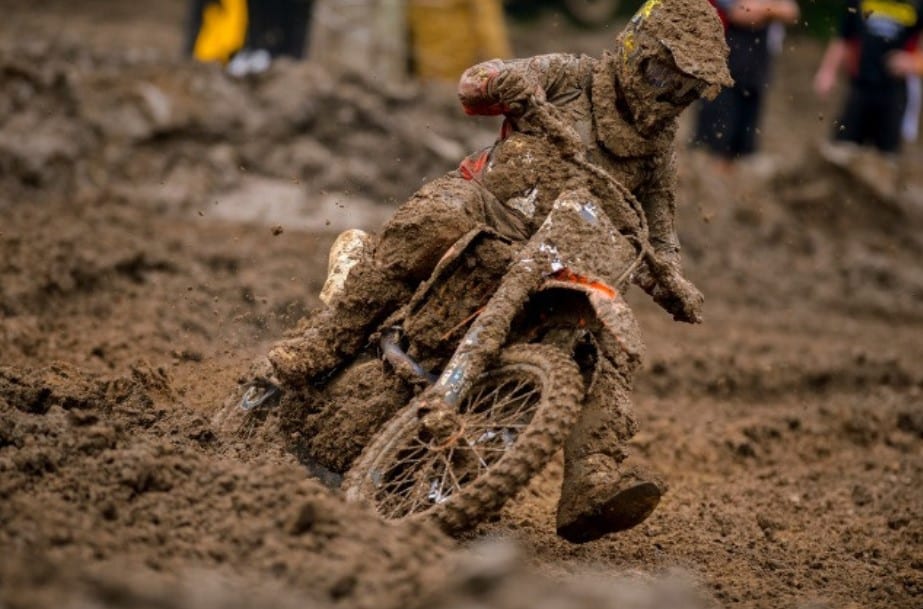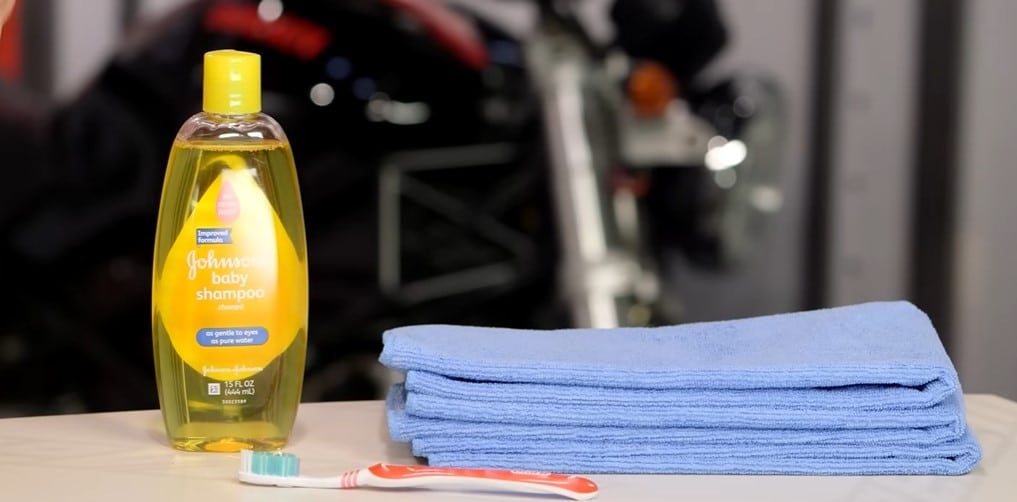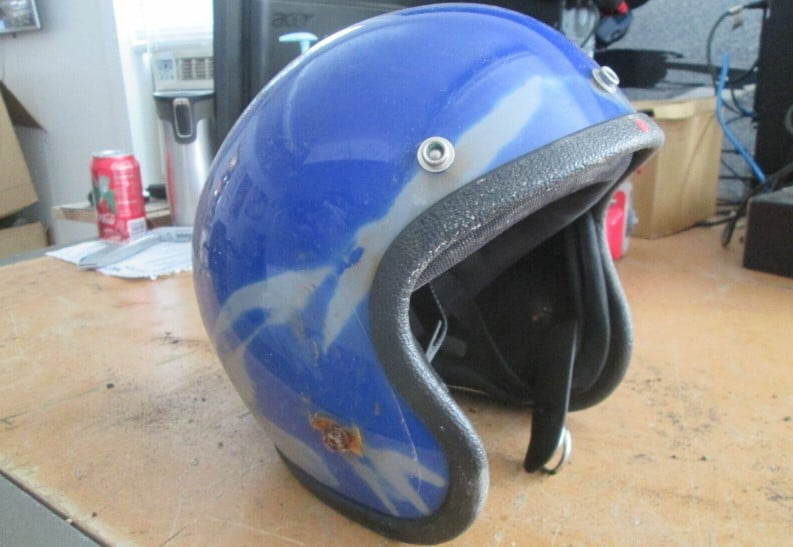Motorcycle helmets get sticky with exposure to sweat, grime, solar heat, UV rays, damp storage conditions, and eventual breakdown of materials, particularly polycarbonate (thermoplastic), caused by the physical loss of oily additives and plasticizers, chemical degradation (aging), or both. But the good news is that you can prevent and delay most of these causes by adopting good helmet-care practices.
By doing so, you can extend the longevity of your lid to 5-8 years. You’ll also keep your rides comfortable, safer, and compliant with universal helmet laws in states like California, where the helmet use rate is about 90%. And the best part—it only takes roughly 3-5 minutes to spot clean, no more time than it would to warm up your bike.
Need a quick fix? I’ve got you covered! Drawing from my personal experience, I recommend the following specialized helmet-cleaning products that can effectively remove grime and leave your gear smelling fresh:
Top 6 Best Helmet Cleaning Products Today
Scroll to the right to find out where to buy, discover the best prices, and see if you might be lucky enough to get a discount from the sellers.
| Helmet Cleaner | Category | Why I Like It | Check & Shop Now |
|---|---|---|---|
| Muc-Off Helmet Cleaning Kit | Best All-Round | Includes helmet, visor and goggle cleaners, foam fresh, anti-fog, & microfiber cloth | RevZilla | Amazon |
| Molecule Helmet Care Kit | Best Budget | Includes anti-fog, cleaner polish, refresh, & rain repellent | Amazon |
| Motul Helmet Clean | Best Exterior | Excellent bug softener with no residue | RevZilla | Amazon |
| Motorex Helmet Care Spray | Best Interior | Pleasant odor with lasting results | RevZilla | Amazon |
| Tub O' Towels Multi-Surface Wipes | Best Wipes | Heavy-duty quick cleaning wipes | Amazon |
| AmazonBasics Microfiber Cloth | Best Microfiber Cloth | Polyester/polyamide blend | Amazon |
A thorough helmet cleaning process takes an hour or two, plus drying time for the interior padding, so over a weekend, preferably every three months, you can easily freshen up your lid. Begin by removing any electronics and taking out the inner padding to handwash separately. To soften baked-in bugs and grime, soak a fine towel in lukewarm water and drape it over the shell, and shield for 15 to 20 minutes.
Pro Tip: Contrary to popular opinion, don’t fully submerge your helmet in water, even for a minimum of 15 to 20 minutes as most blogs claim. In most cases, it’s not possible to remove the energy-absorbing liner (EPS) and the retention system, and soaking the entire helmet can cause water to penetrate these critical components, compromising their integrity and safety.
6 Reasons Motorcycle Helmets Get Sticky and Possible Remedies

A clean and fresh-smelling helmet equals a less distracted, happier, and healthier you at the end of each day of riding. So, let’s see why helmets get sticky and some easy quick fixes for each.
But first, which kind of “sticky” am I talking about? You know, towards the end of the season when the gradual buildup of oily residue starts to affect my mental health! I mean, you’re probably always on-the-go like me, but you can only ignore helmet odors for so long. Trust me on this!
1. Sweat and Humidity
When you’re out riding, whether in summer or winter, your helmet can get quite warm, and your body naturally sweats to regulate its temperature. Unfortunately, our sweat contains salts and oils from the skin, which can get absorbed into the padding and liner of your helmet.
Over time, this can lead to a buildup of gummy residue and the growth of bacteria that thrive on sweat–the same kind that causes unpleasant odors in dirty socks.
To beat this cause, here is a two-pronged approach:
- Wear a Bandana or Balaclava: Wearing under armor beneath the helmet helps soak up the extra sweat and hair products.
- Ride With All Air Intake Vents Open: Airflow throughout the helmet scoops up the sweat as soon as it forms and shoots it out the back of the lid.
2. Other Dirt and Grime

Yes, if you don’t regularly clean and maintain your helmet, dirt and grime from the road and trails will find its way into the crevices of the helmet and the exterior, and accumulate, forming a film. It’s unpleasant, just to think of it, but nonetheless, it’s a leading cause of a tacky helmet.

Giving your helmet a proper clean every season, as well as a regular gentle wipe after every use, should suffice. And when you do, use only helmet-specific cleaners, such as the Muc-Off Helmet Cleaner, which gives you a one-stop solution, including its own microfiber wipe of the same quality as Cycle Care Microfiber Detailing Towel.
If you need to clean a glossy motorcycle helmet, use a polish, but for matte helmets, a mild soap solution of lukewarm water and a fine, lint-free towel or the Molecule Matte Helmet and Stockton Matte Finish Cleaner detailers will remove sticky residue. Avoid harsh substances like petroleum-based solvents, alcohols, acetone, or even WD-40 Specialist Contact Spray Cleaner, as any of these could dissolve and weaken the functional materials of the helmet, making it less effective. This leads us to the next cause.
3. Exposure to Harsh Chemicals

Certain chemicals like benzene solvents break down helmet materials to produce a sticky residue. You may unknowingly apply them directly through cleaning solutions, or they may be accidentally picked up in storage or during use. Other times, the surface is clean, but the cleaning product leaves a residue on the shell or shield, which could negatively impact performance.
Instead, use a clean microfiber cloth or sponge and mild soap. Ordinarily, you can cover the entire shell and shield with a towel dipped in warm soapy solution to soften the bugs and grime, making it easy to wipe off. There’s no need to apply elbow grease or abrasive techniques, as these can cause the helmet to break down.
And of course, the best helmets are those that allow you to remove the inner padding for separate hand washing.
4. Improper Storage
Like your motorcycle leathers, the longevity of your lid hinges on the quality of storage conditions when not in use. Keeping the helmet in a damp environment encourages the growth of mold inside and exterior surfaces, which is not pleasant!
To keep your helmet fresh and clean until its riding season again, choose a cool and dry place away from moisture and heat sources. You can invest in a helmet storage bag, which allows it to breathe, while keeping out direct sunlight and its harmful UV.
5. Ultraviolet Rays and Heat From the Sun

So far, I have mainly focused on why helmets get dirty on the inside, but why do motorcycle helmets get sticky on the outside? The sun causes a different kind of tackiness on helmets that results from the degradation of the main shell and other materials due to UV exposure. Leaving your helmet under heat stress from, say, in a car trunk or exposed to the scorching midday sun, doesn’t do it any favors.
This happens because polymers break down into other molecular structures, and additives that stabilize the material leach out with time.
While rain sucks, it appears the sun is an even more vicious helmet destroyer. Yes, helmets don’t tan that well, so it’s best to keep your new Shoei X-15 (with improved airflow compared to its predecessor X-14 and hydration system compatibility just like the AGV Pista GP RR) in a shade or helmet bag away from direct sunlight and excessive heat.
6. Normal Aging and Wear

Even with the best care, thermoplastic helmet materials can become either sticky or brittle over time, even when not in use. For instance, helmets made of High Resistance Thermoplastic Resin (HIR-TH), such as the AGV K3 SV, will likely become sticky after about a decade. At first, you might only notice the rubberized coating gone sticky, but eventually, it can spread to the entire helmet.
Unfortunately, these changes are permanent and irreversible, which usually means you need to buy a new helmet.
In contrast, the fiberglass Nexx X.WED2 Purist helmet, like the Nolan X-lite X-802RR, would take about 50 years (theoretically) to suffer the same fate, while the premium Arai Corsair-X RC would last indefinitely because its carbon fiber is stable. However, the inner lining will eventually deform and lose its ability to wick extra moisture from skin, feeling sticky even when just cleaned. At this point, the helmet is no longer effective in a crash and should be replaced immediately.
Pro Tip: To ensure that you ride with a safe and fresh helmet, replace it every 5 to 8 years or anytime it’s exposed to an impact, even if it seems minor.
Michael’s Summary and Conclusion
As noted above, to remedy a tacky helmet, you will need to spend time and money to clean it or replace it. At home, you can use mild soap and warm water for your helmet bath. Be sure to remove electronic components and the inner lining to wash separately before cleaning the shell with water. And finally, storing your helmet under the right conditions also plays a major role in its longevity and protectiveness in a crash.
Unwashed and poorly stored helmets can be gross and time-consuming to clean. And, could this, together with our ever-tighter schedules, have something to do with the recent showing that helmet use has declined by 6.1% since 2017? Interestingly, more riders in rural areas (71%) are more likely to wear a DOT-approved helmet than their urban counterparts, posting a 67.4 % use rate. Again, does the thought of putting on a gross and smelly helmet discourage people from wearing one?
FAQs — I Have The Answers!
Q: How Do You Get the Stickiness Out of a Motorcycle Helmet?
To remove stickiness from a motorcycle helmet, you can use specialized cleaners, including Molecule Helmet Care Cleaner or Motul Helmet Clean. Or, opt for a mild soap and warm water solution with a soft microfiber cloth from Motopro. Avoid using harsh chemicals like benzene and alcohol, as they can disfigure the helmet’s graphics and materials.
Q: How Do I Know If My Motorcycle Helmet Is Bad?
To know if your motorcycle helmet is bad, inspect for dents, cracks, and other signs of damage. If the padding on the inside no longer fits snuggly or feels sticky after cleaning, it’s time for a replacement.
Q: How Long Does It Take for a Helmet to Dry?
It may take up to 24 hours for your helmet to dry after a deep clean with water and soap, or at least overnight depending on the weather conditions where you are. To avoid stickiness, it is best to air dry the helmet until completely dry before wearing it.
Q: Is It Safe to Ride With a Sticky Helmet?
No, it’s not safe to ride with a sticky or tacky helmet shell or inner lining as it could indicate wear that may affect its ability to protect you in a crash. If you have cleaned your helmet and it is still sticky, it may be time to get a new one to ensure your safety on the road.
Q: Do Stickers Damage Motorcycle Helmet?
Stickers can only damage a helmet if they are applied or removed improperly. Some adhesive types can be harmful, leaving behind residue that is difficult to remove without using force or harsh chemicals, which can, in turn, harm the helmet’s fit and finish.
Q: How Do You Get Sticky Residue Safely Off a Helmet?
You can try using mild soap and water with a gentle rubbing cloth, or you can massage vegetable oil onto the helmet to soften the adhesive before wiping it off. If those methods don’t work, you can use a specialized cleaner like the Motul Interior Helmet Clean, which has anti-insect film properties similar to Motorex Helmet Care Spray.
Avoid applying excessive force, scouring, or harsh cleaning chemicals to prevent damaging the shell’s finish.
Q: Is It Okay To Soak a Helmet in Water?
No, you should not soak the helmet in water as this can deform the internal materials, reducing the helmet’s lifespan and effectiveness. Instead, use a soft brush or cloth to work the cleaning product over the entire surface and then gently wipe it down. Rinse and repeat until it is satisfactorily clean.
Information for this article was partially sourced and researched from the following authoritative government, educational, corporate, and non-profit organizations:
- National Highway Traffic Safety Administration
- Bohn & Fletcher, LLP
- Smarter-USA
- Arai Americas
- Shoei Helmets
- AGV Helmets
P/A












